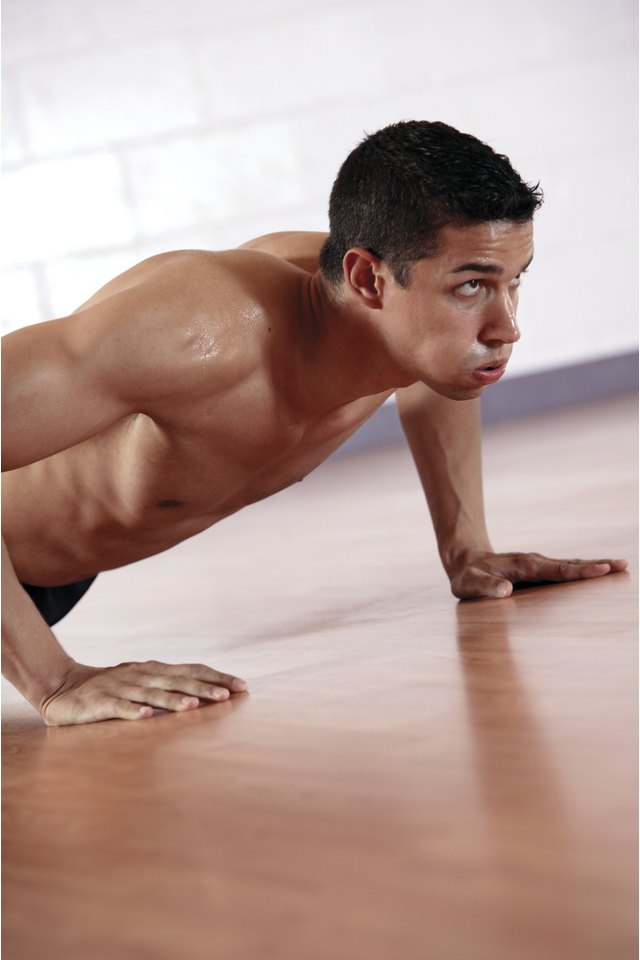Is a Pushup a Shoulder Flexion or an Extension?

Pushups are easy for some and hard for others, and even interpreting the movement in an anatomical manner is complicated. Essentially, a single pushup involves the movement of the arm through a variety of anatomical positions. At the end of the pushup, though, when your arms are straight out and your body is held away from the floor, your shoulder will be in a flexion position; shoulder extension is not involved. Whether you can achieve multiple flexions of the arm comes down to your own level of fitness, but practice makes perfect.
Extension
Contrary to regular people's understanding of an extension, which can be thought of as making the arm as long as possible, in technical terms shoulder extension is very different. Create an imaginary vertical line through the body and divide it into front and back halves. The extension describes the movement of the arm in that back half. For example, a crab walk, where you face upward and your arms hold your weight underneath you, is an extension. Pushups do not involve shoulder extension.
The Shoulder Joint
A very movable joint, the shoulder can lift the arm out in front and upward, which is flexion. Using the imaginary vertical line dividing the body into front and back halves, any time an arm is in front of the line, it is flexed. The joint can also move the arm backward and upward, which is extension. It can also abduct the arm, lifting it outward from the body, and adduct it, which means pulling it back toward the body. The joint also allows for internal rotation, which is the movement made by placing the hand behind the back, and external rotation, which is represented by turning the upper arm out so that the palm faces forward. These movements are controlled by various muscles acting on the joint.
Initiating the Pushup
At the start of the pushup, the palms are on the ground, the elbows are below the shoulder joint and the arms are flexed. As the body is lowered toward the ground the elbows, and therefore the arms, move outward. At the lowest point of the movement, the arms are far more abducted than flexed.
Second Half of the Pushup
The return to the initial position for the pushup involves performing the same movements, only in reverse. This means bringing the elbows back into the body, which requires the arms to adduct. This has the effect of straightening the arms so the level of flexion is increased. Once the arms are straight, the pushup can be repeated.
Shoulder Muscles Involved
The rotator-cuff muscles are important flexors at the shoulder joint, and these are the SITS muscles, which are the supraspinatus, infraspinatus, teres minor and subscapularis. The SITS muscles also aid in the initiation of abduction. The deltoid muscle completes the abduction movement.
References
Writer Bio
Jillian O'Keeffe has been a freelance writer since 2009. Her work appears in regional Irish newspapers including "The Connacht Tribune" and the "Sentinel." O'Keeffe has a Master of Arts in journalism from the National University of Ireland, Galway and a Bachelor of Science in microbiology from University College Cork.
